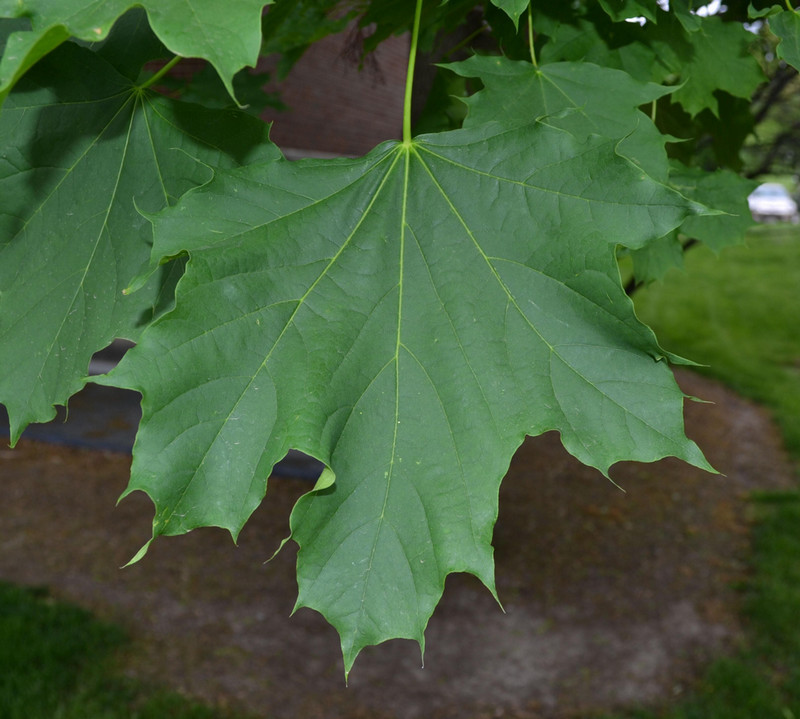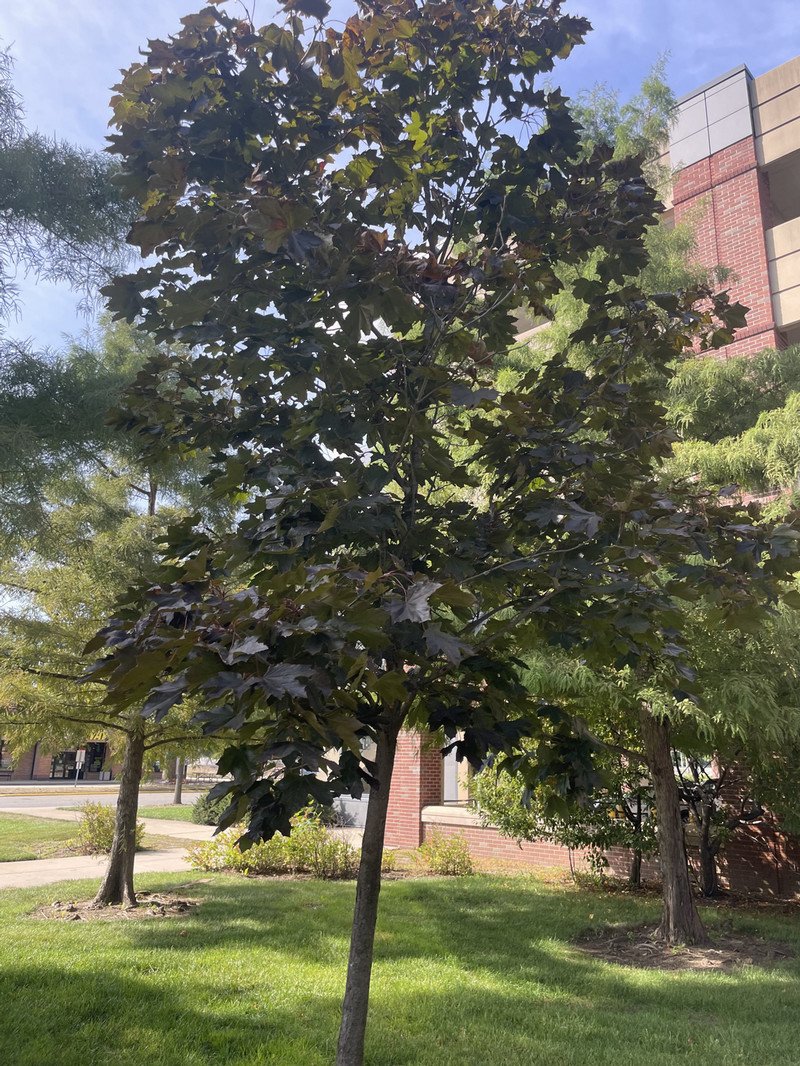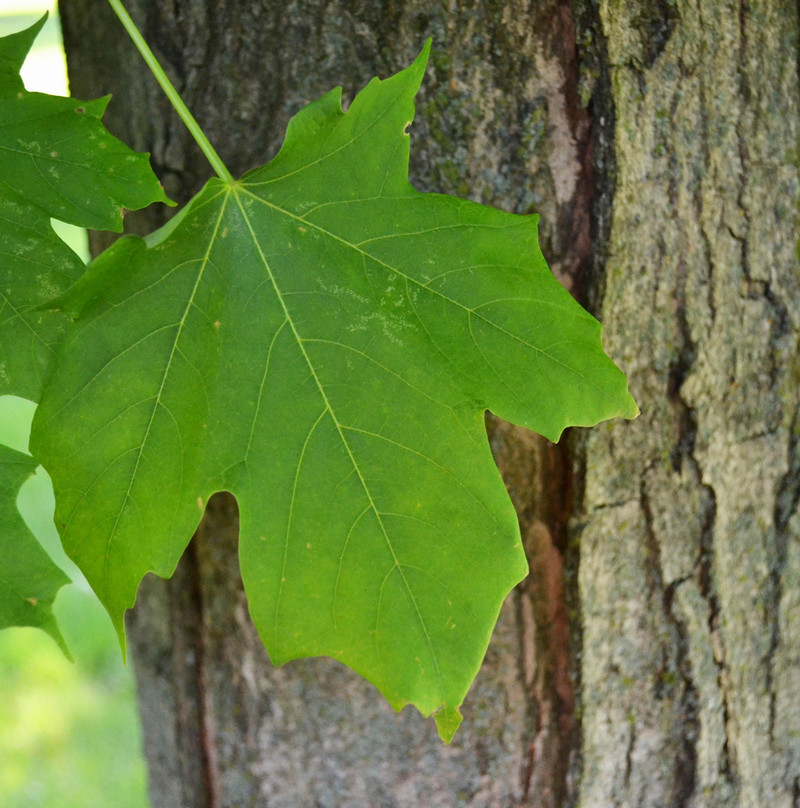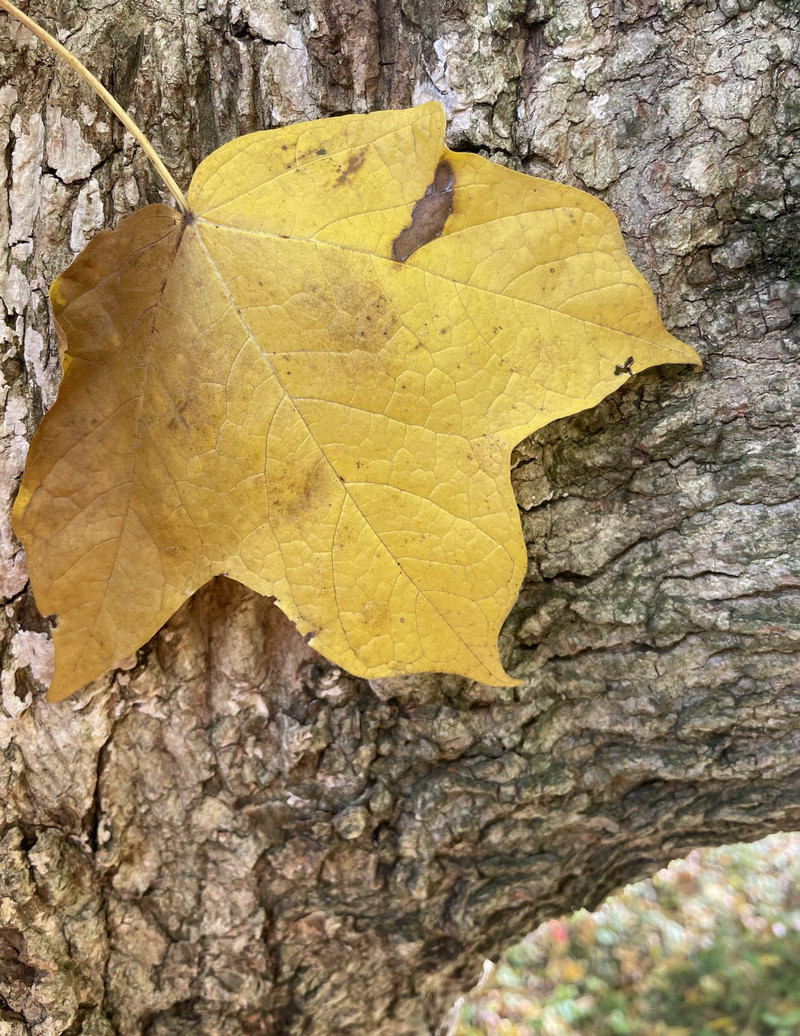Distinguishing Between Norway, Sugar, and Black Maples
Above: Sugar maple leaf, photo by Purdue Arboretum
These three maples have somewhat similar-looking leaves. On the surface, you may think this is simply an academic exercise. But if you care about invasive plants and local ecology, this distinction is an important one.
Norway maple is an invasive tree species, while sugar and black maples are native tree species (sometimes called hard maples). Sugar and black maples are even more beloved for their gift of delicious sugary sap that can be made into maple syrup and similar products. They also make great shade trees. Note that there are other native and non-native maple species.
One way to distinguish between Norway (Acer platanoides), sugar (Acer saccharum), and black (Acer nigrum) maples is to count the number of lobes on the leaves. Lobes are large areas of the leaf that stick out, like an ear lobe, although that is not the clearest analogy. Norway maples typically have 5-7 lobes (commonly 7), sugar maples typically have 5, and black maples typically have 3-5. Black maple’s bottom two lobes are so much less prominent than sugar maple that it often looks like 3 main lobes. Additionally, black maple leaves droop on the sides, almost like they are starting to wilt from lack of water.
Another way to distinguish Norway maples from native maples (sugar and black) is to look at the winged seeds, called samaras. Children may call these “helicopters,” as they twirl on their way to the ground. The Norway maple has paired samaras arranged like a handlebar mustache. Sugar and black maple samara pairs look more like a Fu Manchu mustache, pointing downward rather than the near horizontal arrangement of Norway maple samaras.
A third way to distinguish Norway maples from native maples is to snap off the long leaf stem (petiole). Norway maples have a milky latex sap that exudes if you squeeze or pinch a petiole, while native maples have clear sap.
There are a few other identification nuances between these species. For example, black maples have stipules (leaf-like growths) at the base of their petioles (absent on sugar maple). They also have pubescence or hairiness on the underside of the leaves. Norway maple has hairs in the axils of leaf veins. Norway maple’s leaves are generally broader than long. Other differences may be seen in the bark, twigs, buds, and fall coloring.
Although Norway maple is an invasive species, it has been a long-time landscaping favorite of homeowners, especially cultivars like ‘Crimson King’ that retain their deep red color all year. This attribute has made Norway maple a popular choice because few other options exist to offer that color feature for the landscape. Other varieties or cultivars exhibit the normal green leaf color. Native to northern Europe, the tree was introduced in America in the late 1700s. George Washington reportedly purchased two trees in 1792 to plant at Mount Vernon.
Purdue Extension’s “Invasive Species” website (https://ag.purdue.edu/reportinvasive/) says that Norway maple outcompetes many trees, including the ecologically and economically important sugar maple. It forms a thick canopy that shades out the understory. Additionally, native trees like the sugar maple support many more native insects, which in turn feed native bird populations.
Michael A. Dirr noted of Norway maple in Manual of Woody Landscape Plants: “Over-used and probably over-rated tree; the species and several of the cultivars, especially ‘Crimson King’, are overplanted; has been used as lawn, street and park tree…species has escaped and in pockets is out-competing the native flora.”
According to the assessment of Norway maple by the Indiana Invasive Species Council (IISC), it serves as a preferential host of the invasive Asian long-horned beetle and other pest insect species, which then can lead to infestations on less preferred native tree species. Although the Asian long-horned beetle is not known to exist in Indiana, according to EDDMapS1, it is in Illinois and Ohio, near Northwest and Southeast Indiana. Have we set the stage for the support of this destructive pest?
IISC also notes that Norway maple is significantly more shade-tolerant than sugar maple, allowing it to out-compete the native maple for light. The milky latex sap may account for inhibited local herbivory (animals/insects that feed on plants).
As homeowners, we ask you to consider planting native trees in your landscape rather than invasive trees. Do your homework before installing such a long-term asset to the landscape. Also, consider a diversity of native species.

Above: Norway maple leaf, photo by Purdue Arboretum

'Crimson King' Norway maple, photo by Purdue Arboretum

Above: Sugar maple, photo by Purdue Arboretum

Above: Black maple in fall, photo by Purdue Arboretum
1EDDMapS. 2025. Early Detection & Distribution Mapping System. The University of Georgia - Center for Invasive Species and Ecosystem Health. Available online at http://www.eddmaps.org/; last accessed April 30, 2025.